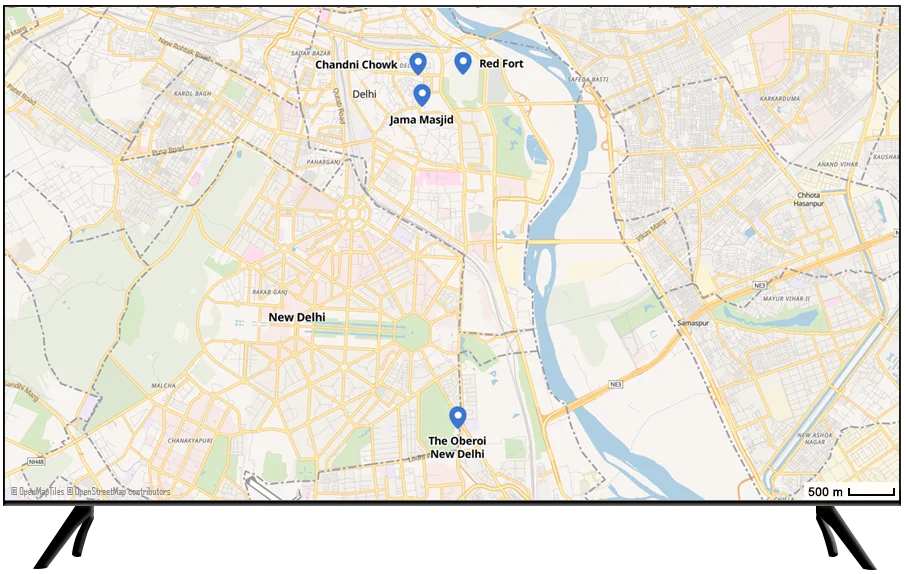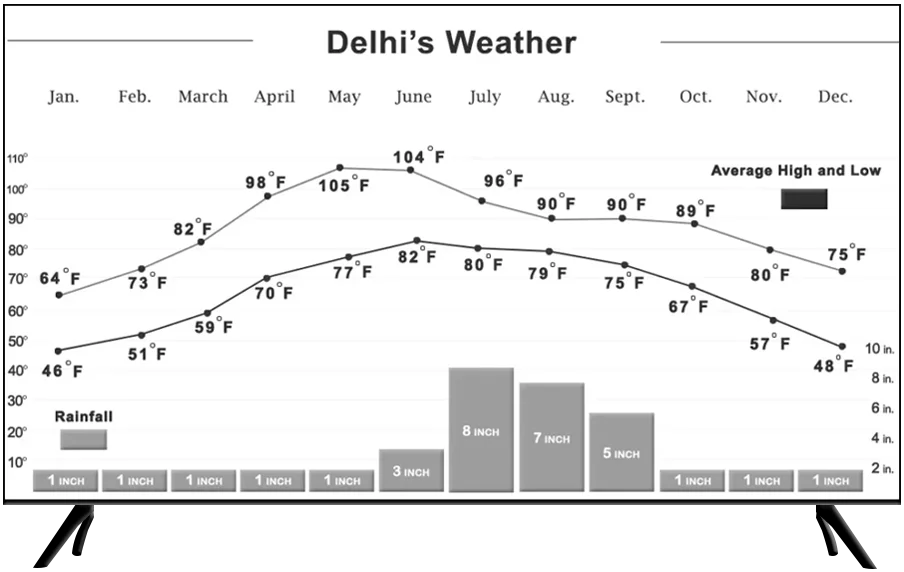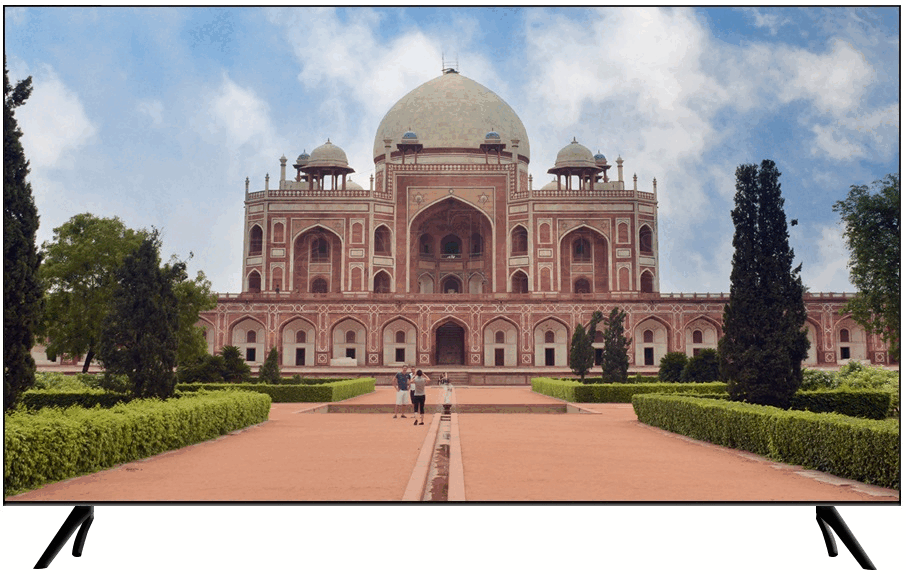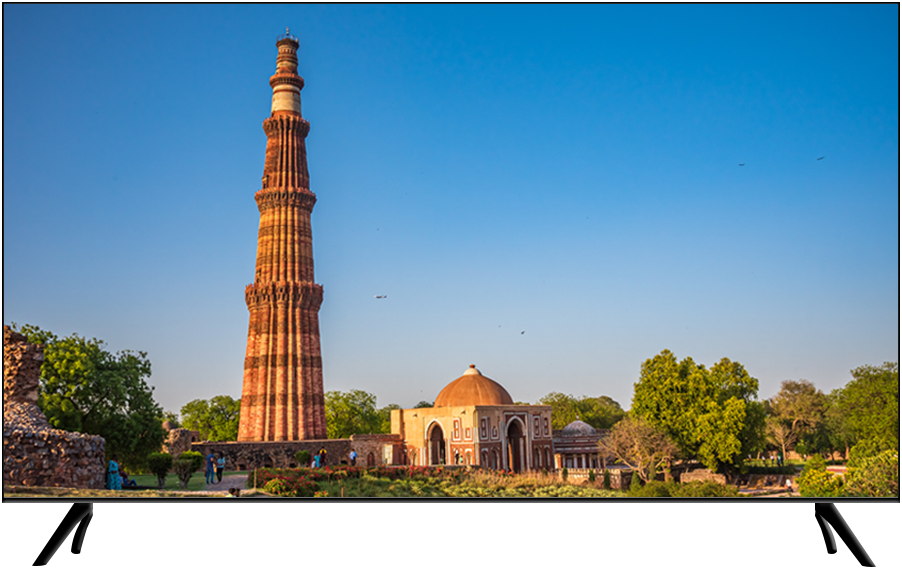



Day 3. Delhi
Overnight – The Oberoi New Delhi
Start your morning with another delicious breakfast just as the day before. Along with your preferences from all the other options, you will be served a fresh crispy dosa, made to your preferences, with sambhar. Originating in the southern state of Tamil Nadu, dosas are now one of India’s most popular foods and are eaten for both breakfast and lunch. This large round ultra-thin crepe is served folded over and is accompanied by sambhar, a delicious and thin lentil-based stew containing morsels of fresh vegetable and delightful bland spices. Dosas are always accompanied by a selection of hand ground chutneys, the most common of these being a coconut chutney. Most dosas are made with a black lentil and rice fermented batter, but there are a few other options available, including a delicious and healthy version made of Ragi (finger or red millet). Along with your choice of batter, you have the option to have your dosa plain, or served as a ‘masala dosa’ that includes a potato and vegetable gravy inside the dosa.
You will now enjoy a short drive through some of Lutyens’ historic New Delhi. You will stop for a view of the exterior of the massive and awe-inspiring Rashtrapati Bhawan, which was known as the Viceroy’s House during the British era. From here you can also enjoy a striking view of the India Gate at the other end of majestic and historic Rajpath, the former Kingsway.
Almost next to India Gate is the crown jewel of India’s museums, the National Museum. You will experience a short visit to the Harrapan Gallery here. The museum has about 200,000 artifacts but you will explore just a very small section that pertains to the Indus Valley Civilization. A Cradle of Civilization, the Indus Valley exhibits will awe you with their amazing four and five millennium old artifacts and will give you insights into some of what you will experience during your tour of India. Those who are not interested in museums at all can ask their tour director to substitute this visit with other experiences. Guests who want more time at the museum should let us know soon after reserving their tour.
Next you will drive through a section of Connaught Place, which is New Delhi’s downtown and still retains its colonial architecture and design. Arrive at the Bangla Sahib Gurudwara, which is a large gold domed Sikh House of Worship and is the most prominent Gurudwara in Delhi. It was first built as a small structure in 1783 and then expanded over the next few decades. The campus includes the temple, a kitchen, a school, an art gallery, and the Sarovar (Holy Tank) whose water is called Amrit (Holy Nectar). As with all Sikh Gurudwaras, volunteers, including children and the elderly, the extremely wealthy and not so well-off perform almost all the chores required to keep the Gurudwara functioning. A fascinating part of this is the daily langar (community meal), and you will witness as thousands of meals are served to all visitors who want one, regardless of race, religion, gender or belief. Only vegetarian food is served, so that no religions dietary restrictions are violated.
A short drive from here will get you to another UNESCO World Heritage Site, the magnificent tomb of the Mughal Emperor Humayun. Delhi has such an abundance of amazing monuments that this Tomb Complex (1562 A.D.) does not quite get the acclaim that it deserves. Its striking beauty and flawless proportions will captivate you.
After these stops a drive on tree lined avenues surrounded by embassies of the world’s major nations will bring you to your next experience, where you will stop for a walk through one of Delhi’s most colorful middle-class bazaars, the Sarojini Nagar Market. This massive street level bazaar has multiple sections, from garments to vegetables to street food, and outside the brick-and-mortar structures are street stalls and other sellers with just a small table of displays. Always abuzz with activity, you will be able to experience a portion of the bazaar as the middle-class residents of Delhi go about their shopping and bargaining.
Late Afternoon – You will return to your hotel and freshen up, after which it is time to enjoy a Chaat cooking session with the hotel chefs. Along with being India’s gastronomical capital, Delhi also has the most amazing street food (chaat) in the country, although residents of Mumbai and Kolkata will most likely not agree with either of the preceding statements. Everywhere you go in India, you will see thousands of street vendors with manually pushed carts and small roadside stalls who have a constant stream of locals enjoying the incredible tastes of chaat. Much as you might be tempted, we only recommend chaat and other street food at the upscale restaurants where you will dine – many of them offer some chaat options on their menu’s.
You will learn about some of the dozens of different popular chaat items, and before you start on the cooking experience you will sample a few, including what is arguably the most unique street food there is, the golgappa.
Also known as pani puri in other parts of India, the explosion of flavors that a golgappa creates on your palate cannot be described in words – it is a combination of spicy, tart, sweet, crunchy and more.
Learn how to make two of the most popular street foods that are fairly easy to make, aloo (potato) tikki and aloo chaat. While you are learning you will be enjoying multiple other amazing chaat items. After this don’t be surprised if you end up asking for different chaats throughout your time in India!
Start your morning with another delicious breakfast just as the day before. Along with your preferences from all the other options, you will be served a fresh crispy dosa, made to your preferences, with sambhar. Originating in the southern state of Tamil Nadu, dosas are now one of India’s most popular foods and are eaten for both breakfast and lunch. This large round ultra-thin crepe is served folded over and is accompanied by sambhar, a delicious and thin lentil-based stew containing morsels of fresh vegetable and delightful bland spices. Dosas are always accompanied by a selection of hand ground chutneys, the most common of these being a coconut chutney. Most dosas are made with a black lentil and rice fermented batter, but there are a few other options available, including a delicious and healthy version made of Ragi (finger or red millet). Along with your choice of batter, you have the option to have your dosa plain, or served as a ‘masala dosa’ that includes a potato and vegetable gravy inside the dosa.
You will now enjoy a short drive through some of Lutyens’ historic New Delhi. You will stop for a view of the exterior of the massive and awe-inspiring Rashtrapati Bhawan, which was known as the Viceroy’s House during the British era. From here you can also enjoy a striking view of the India Gate at the other end of majestic and historic Rajpath, the former Kingsway.
Almost next to India Gate is the crown jewel of India’s museums, the National Museum. You will experience a short visit to the Harrapan Gallery here. The museum has about 200,000 artifacts but you will explore just a very small section that pertains to the Indus Valley Civilization. A Cradle of Civilization, the Indus Valley exhibits will awe you with their amazing four and five millennium old artifacts and will give you insights into some of what you will experience during your tour of India. Those who are not interested in museums at all can ask their tour director to substitute this visit with other experiences. Guests who want more time at the museum should let us know soon after reserving their tour.
Next you will drive through a section of Connaught Place, which is New Delhi’s downtown and still retains its colonial architecture and design. Arrive at the Bangla Sahib Gurudwara, which is a large gold domed Sikh House of Worship and is the most prominent Gurudwara in Delhi. It was first built as a small structure in 1783 and then expanded over the next few decades. The campus includes the temple, a kitchen, a school, an art gallery, and the Sarovar (Holy Tank) whose water is called Amrit (Holy Nectar). As with all Sikh Gurudwaras, volunteers, including children and the elderly, the extremely wealthy and not so well-off perform almost all the chores required to keep the Gurudwara functioning. A fascinating part of this is the daily langar (community meal), and you will witness as thousands of meals are served to all visitors who want one, regardless of race, religion, gender or belief. Only vegetarian food is served, so that no religions dietary restrictions are violated.
A short drive from here will get you to another UNESCO World Heritage Site, the magnificent tomb of the Mughal Emperor Humayun. Delhi has such an abundance of amazing monuments that this Tomb Complex (1562 A.D.) does not quite get the acclaim that it deserves. Its striking beauty and flawless proportions will captivate you.
After these stops a drive on tree lined avenues surrounded by embassies of the world’s major nations will bring you to your next experience, where you will stop for a walk through one of Delhi’s most colorful middle-class bazaars, the Sarojini Nagar Market. This massive street level bazaar has multiple sections, from garments to vegetables to street food, and outside the brick-and-mortar structures are street stalls and other sellers with just a small table of displays. Always abuzz with activity, you will be able to experience a portion of the bazaar as the middle-class residents of Delhi go about their shopping and bargaining.
Late Afternoon – You will return to your hotel and freshen up, after which it is time to enjoy a Chaat cooking session with the hotel chefs. Along with being India’s gastronomical capital, Delhi also has the most amazing street food (chaat) in the country, although residents of Mumbai and Kolkata will most likely not agree with either of the preceding statements. Everywhere you go in India, you will see thousands of street vendors with manually pushed carts and small roadside stalls who have a constant stream of locals enjoying the incredible tastes of chaat. Much as you might be tempted, we only recommend chaat and other street food at the upscale restaurants where you will dine – many of them offer some chaat options on their menu’s.
You will learn about some of the dozens of different popular chaat items, and before you start on the cooking experience you will sample a few, including what is arguably the most unique street food there is, the golgappa.
Also known as pani puri in other parts of India, the explosion of flavors that a golgappa creates on your palate cannot be described in words – it is a combination of spicy, tart, sweet, crunchy and more.
Learn how to make two of the most popular street foods that are fairly easy to make, aloo (potato) tikki and aloo chaat. While you are learning you will be enjoying multiple other amazing chaat items. After this don’t be surprised if you end up asking for different chaats throughout your time in India!

